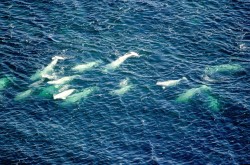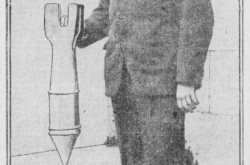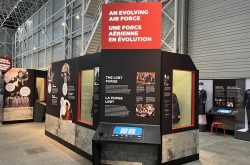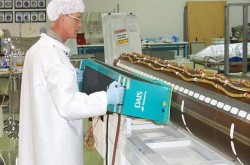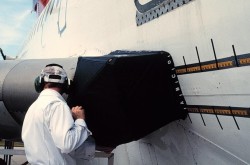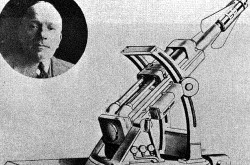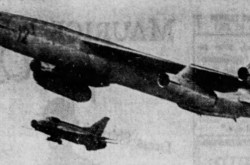Stamp of approval: Emily Crombez honoured for her ground-breaking role in female aviation
Emily Crombez thinks it’s pretty cool that the post office doesn’t mark over the commemorative stamp that features her face when she receives a package.
A female aviation icon in Canada, Crombez was recently recognized through the release of a stamp created by the Ninety-Nines, an international organization of women pilots. The stamp commemorates her service as the first female pilot of the Canadair CL-415 water bomber in North America, a feat she wasn't even aware of while she was doing it.
Crombez says she clearly remembers seeing water bombers for the first time, while at Confederation College in Thunder Bay, ON, working towards her commercial flight training and floatplane rating. In that moment, she set a goal for herself.
“I thought, ‘I want to fly those,’” recalls Crombez, now 33, reminiscing by phone from her home in Norwich, ON. “I went to the Ministry of Natural Resources and Forestry and said, ‘How do I get here? What qualifications do I need?’”
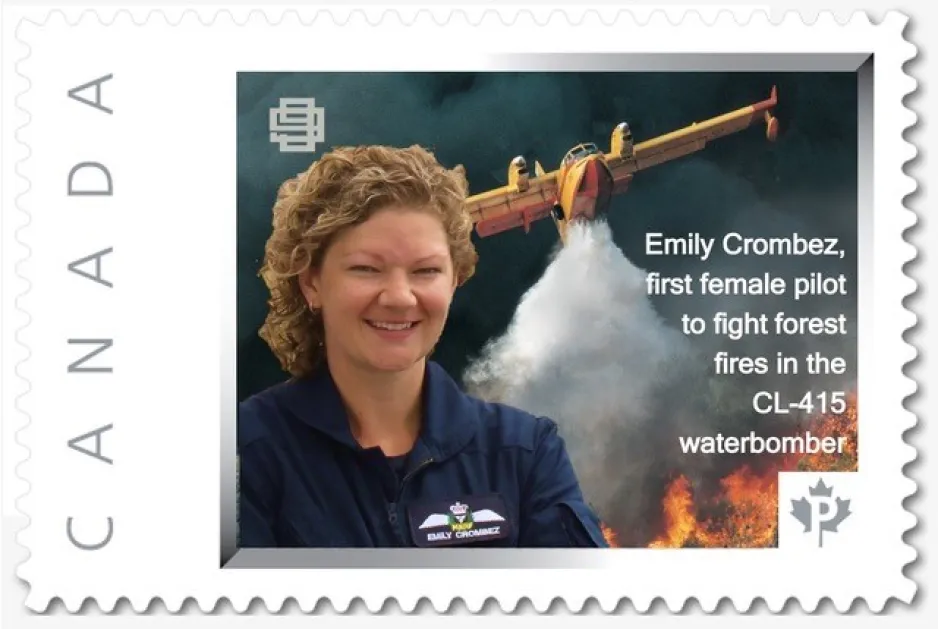
She had already been in the male-dominated aviation program, but decided to specialize even further. First she flew float planes, which take off and land on the water. Crombez also flew bush planes up to remote areas, often landing on gravel runways. Bush planes frequently carry extra equipment like abnormally large tires, skis, floats, or anything else necessary for unpaved landings.
Crombez buckled in and did what she had to do; she flew in the bush, got some multi-engine instrument time, and kept applying until the Ministry of Natural Resources and Forestry hired her. “Landing your first job in aviation is always tough, depending on what the industry is doing,” she says.
Breaking new ground
When Crombez first started flying bush planes in 2007, female bush pilots were virtually unheard of in northern Ontario. This made landing a job difficult, and Crombez was only 19 at the time. She says she knew that when employers saw a female name on her resume, they would assume she wasn’t capable of the physical aspects of the job, even though she grew up on a farm and was used to physical labour. When she was able to land jobs, there was the added pressure of having to prove herself.
“I was thinking, ‘Don’t you dare screw up, because if you screw up you ruin it for all the women behind you,’” says Crombez.
She adds that, unfortunately, when a male makes a mistake, it’s often not looked at the same way. Building the trust of passengers, such as the hunters and fisherman she was flying to remote areas, was also a challenge.
“There was the obstacle of being a woman in the bush, which they had never seen before, and then there was the obstacle of being 19 years old,” says Crombez. “They told me I looked like I was 12 because I was wearing jeans and t-shirts and a baseball cap, because that’s what bush pilots wear.”
Growing up on her family’s farm, Crombez didn’t even know that water bombers existed. She says she knew that she might want to become a bush pilot or a crop duster pilot, but did not set out with a plan to fight fires. In terms of her career, she had two potential options: to become a pilot or a teacher. She applied to both programs in high school, but opted to do aviation first as she felt she could always go back to teaching, if needed.
Crombez started her pilot training at the unbelievably young age of 15, when she wasn’t even old enough to drive a car. Her mentor, Harvey Roddick — a retired Brigadier General — took her under his wing, and stuck with her as a student. Crombez speaks glowingly of Roddick and his generosity, and still sees him to this day.
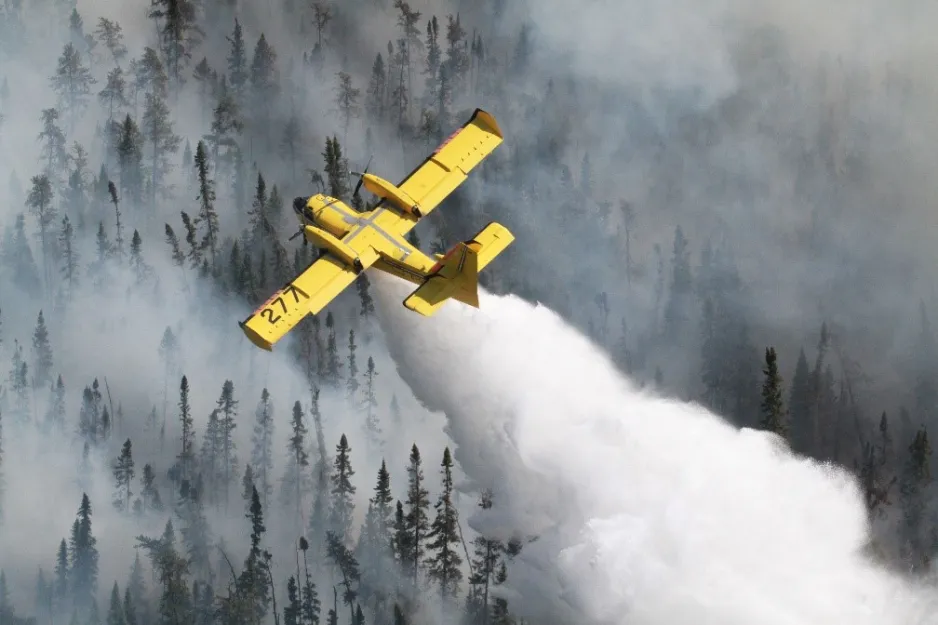
Flying the CL-415 water bomber
Crombez was trained on the CL-415 in 2014, and started flying the renowned water bomber that same year. There were only 95 made between 1993 and 2015. Crombez says that flying the CL-415 was an experience like no other, although she relates it to float flying.
“I always say that it’s doing a lot of what they teach you not to do when you’re in flight training,” she explains. She adds that aside from the flying, you have to learn how to fight fires: by flying low to the ground, scooping up and dumping water, doing tight turns, with lots of aircraft in a small area.
“It’s kind of pushing the airplane to its limit,” says Crombez, although the airplane is built to do so and it’s completely safe. Pushing the limits gives the pilot a boost of adrenaline, and it takes a special type of person to want to fly an airplane in that way. She explains that it also requires a very skilled pilot.
“It’s all hands and feet, there’s no autopilot when you’re doing work like that,” she says.
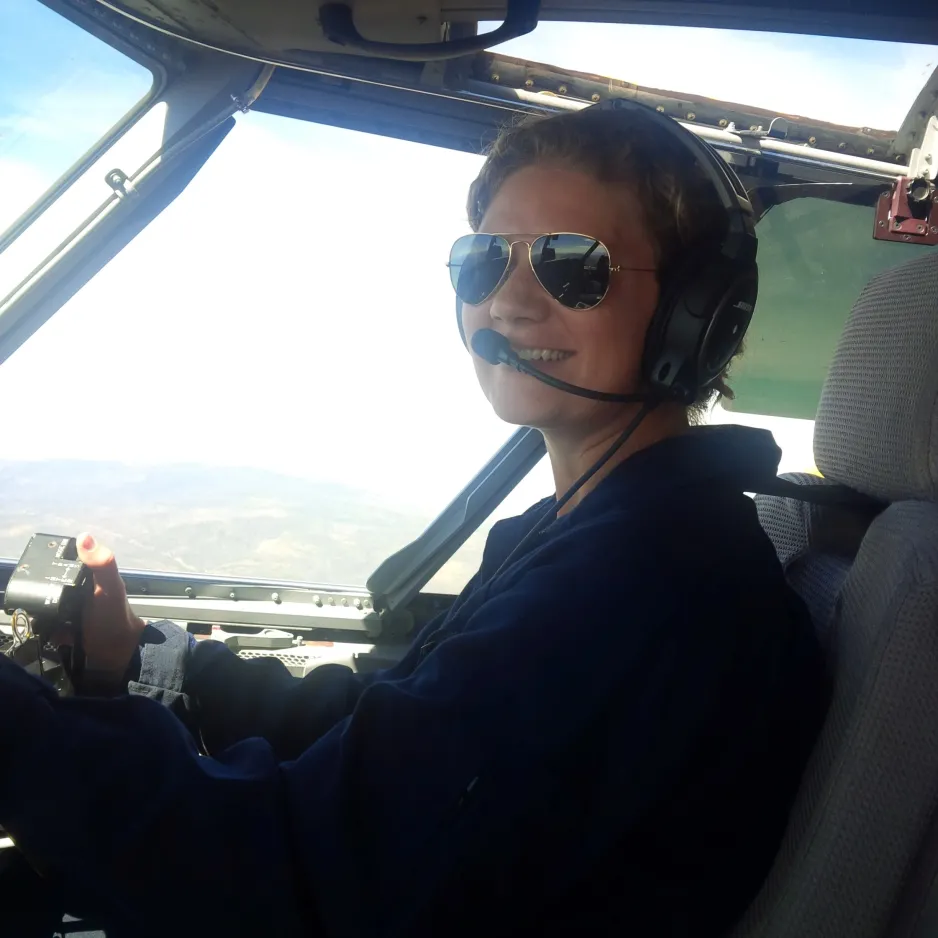
While it is only Crombez and the Canadair CL-415 on the Ninety-Nines’ commemorative stamp, she is quick to point out that water bombing forest fires is a team effort. There are many airplanes and ground firefighters as well.
“It’s never one airplane that saves the day; it’s so much more than that,” says Crombez.
Crombez flew the CL-415 for a few seasons and then decided she needed a change. “You always have your bag packed and in the airplane, and you’re ready to go,” she says. “You don’t know where you’re going or when you're coming back, ever.”
While she loved northern Ontario, flying water bombers is a seasonal job and her family lives in southwestern Ontario. She saw the opportunity for a better lifestyle and schedule by piloting international flights at the commercial airlines, which some of her colleagues were doing; so she took a job with Air Canada.

While flying the CL-415 water bomber was a unique experience, Crombez says her all-time favourite plane to pilot is the de Havilland Canada Beaver DHC-2. It was one of the first airplanes that she flew in the bush, and she still doesn’t think anything else is comparable.
“It’s a legend,” says Crombez of the Beaver. She flew both 1951 and 1953 models, equipped with old radial engines. A real workhorse of an airplane, she compares it to a pickup truck for those who have never flown one.
Examples of other aircraft she’s flown include the Pitts Special, de Havilland Canada DHC-6 Twin Otter, the Boeing 737 and Boeing 777 jets, and the King Air 350. She also owns a Citabria that she flies with her husband, a little two-seat taildragger.
A positive, can-do attitude is reflected in the advice Crombez offers up to young women interested in a male dominated field like aviation.
“Simply set a goal, network, and find out what you need to do to get there,” she says.
She adds that it’s fine to change your mind along the way, or take a different path. Flight training can be very expensive, and Crombez was fortunate enough to apply for and receive scholarships.
“There are lots of people out there willing to help and mentor youth,” she says. In addition, there are many organizations to join that offer scholarship opportunities.
“Apply to jobs even if you aren’t qualified,” she advises. Crombez says this is something women need to do more often, to succeed in male-dominated professions generally. There will probably be adversity along the way, she says, but you must learn to be resilient and learn from your challenges.
“There’s always a way around or through, so don’t give up,” she says.
Due to the COVID-19 pandemic, Crombez is taking a break from flying commercially. During the holiday season, she looks forward to relaxing and eating dinner with her family, since she’s been so busy flying for the past several years. In the meantime, perhaps she’ll continue to reminisce as she sees the CL-415 on her commemorative stamp as more holiday parcels and letters arrive.



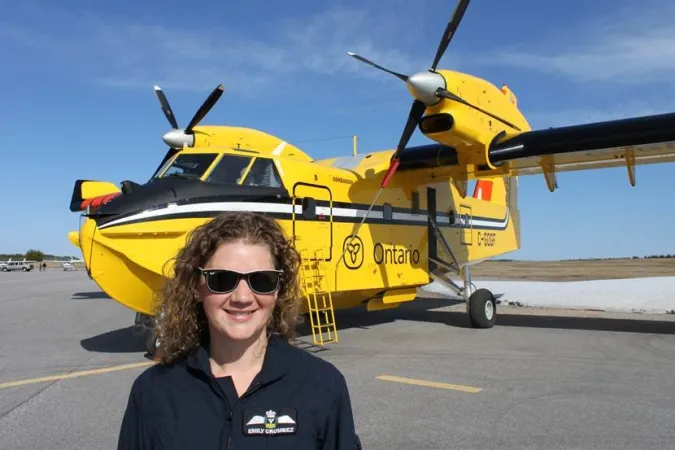





![A block of photographs showing some of the people involved in the bombing of beluga whales in the estuary and gulf of the St. Lawrence River. Anon., “La chasse aux marsouins [sic]. » Le Devoir, 15 August 1929, 6.](/sites/default/files/styles/thumbnail_7/public/2024-09/Le%20Devoir%2015%20aout%201929%20page%206.jpg?h=584f1d27&itok=TppdLItg)
